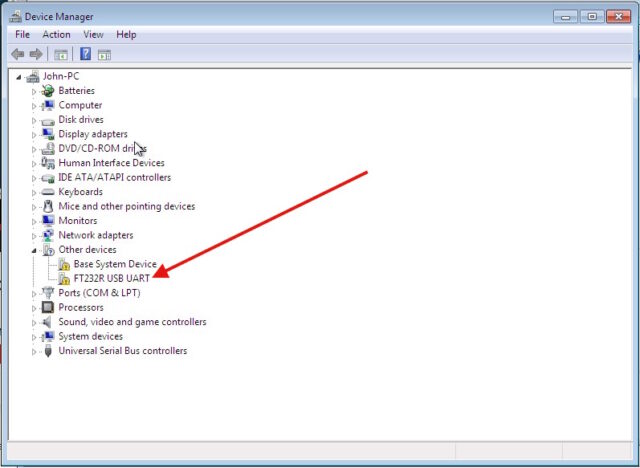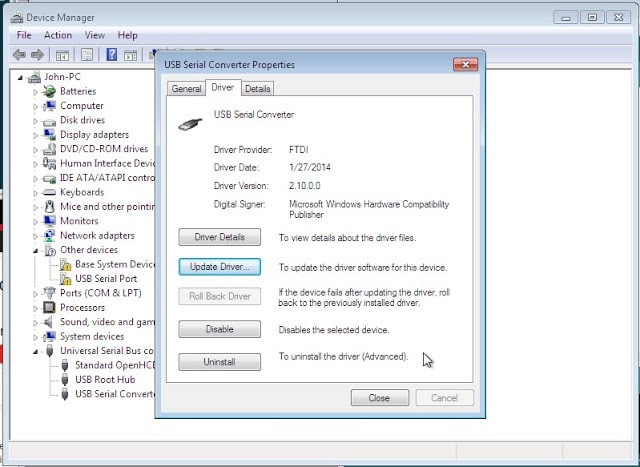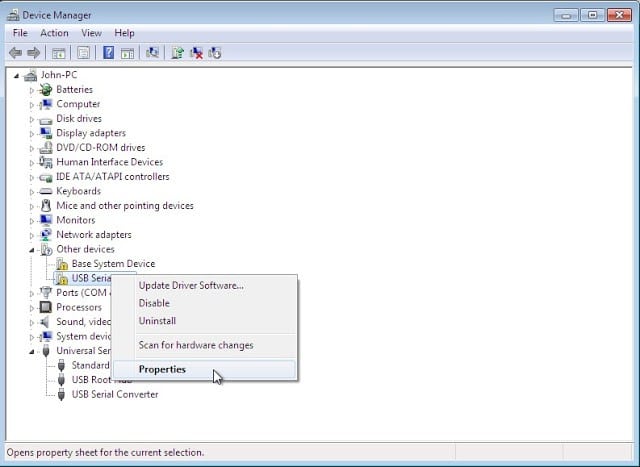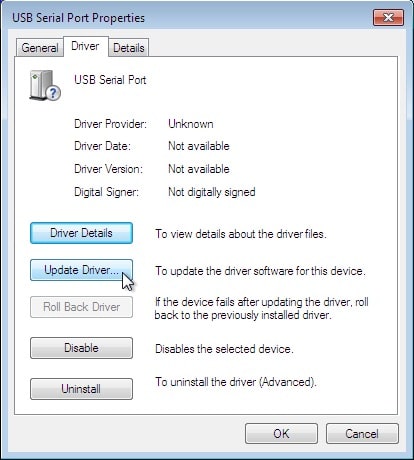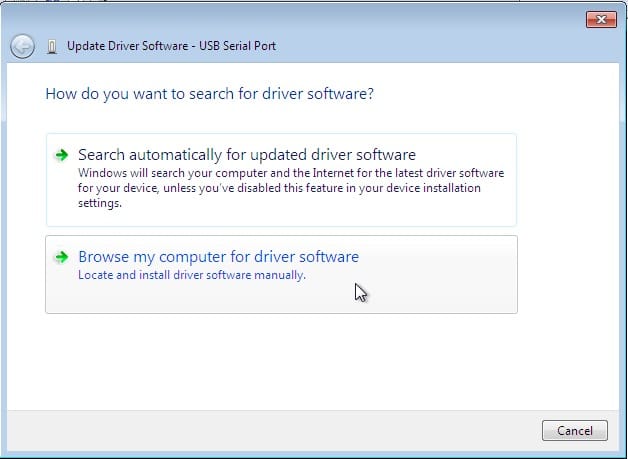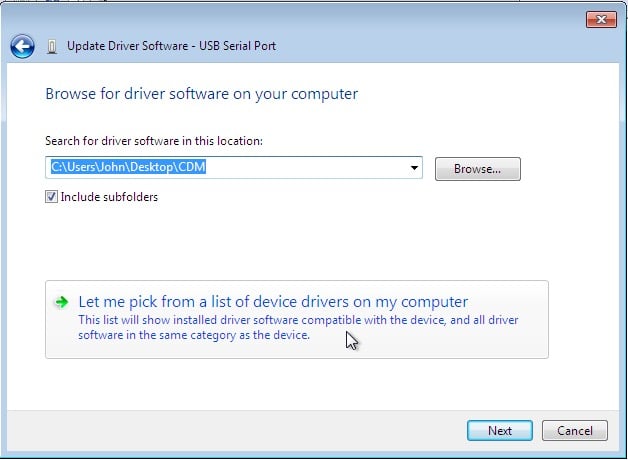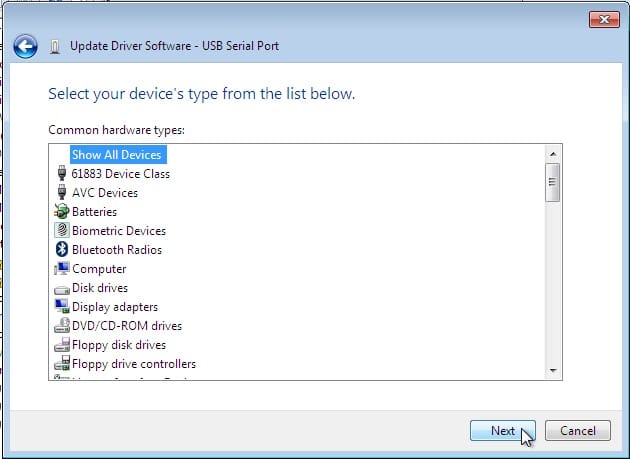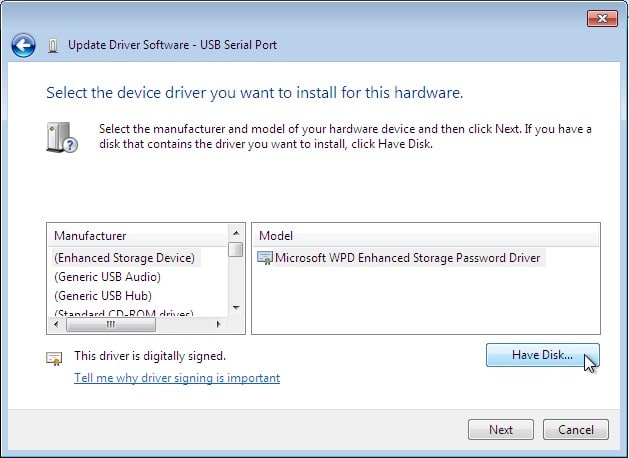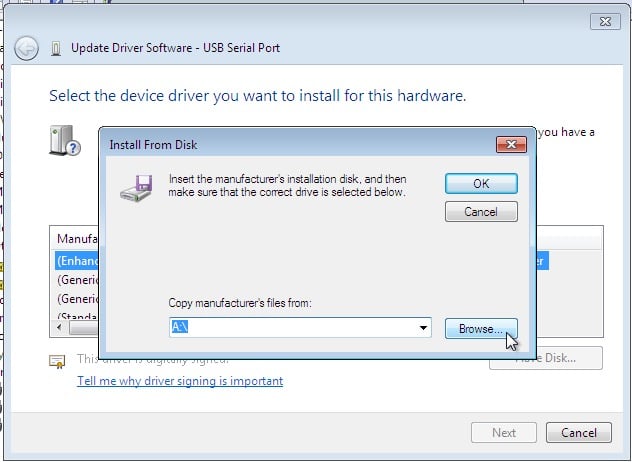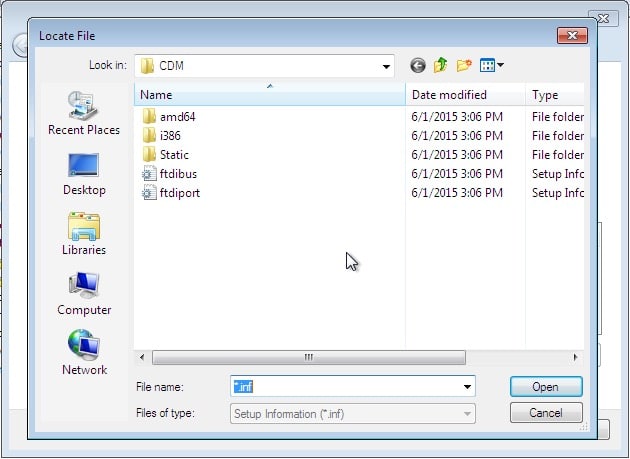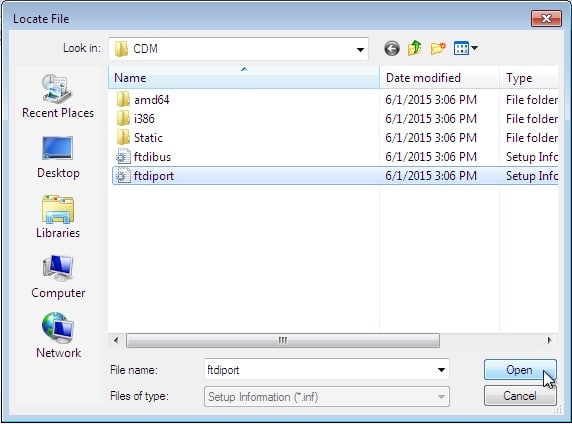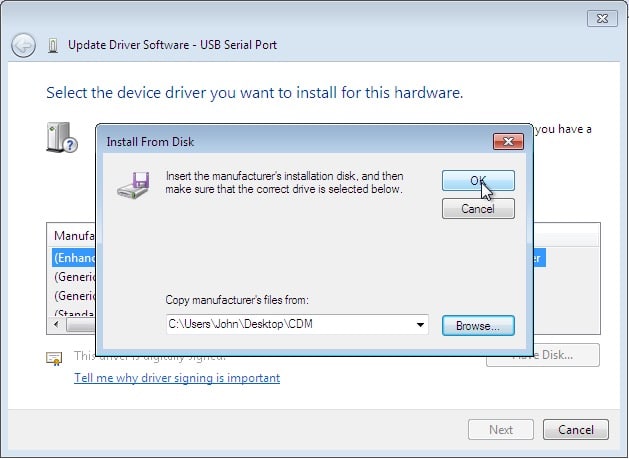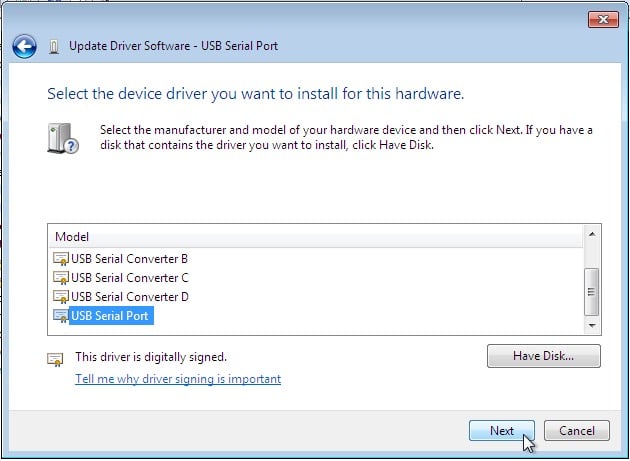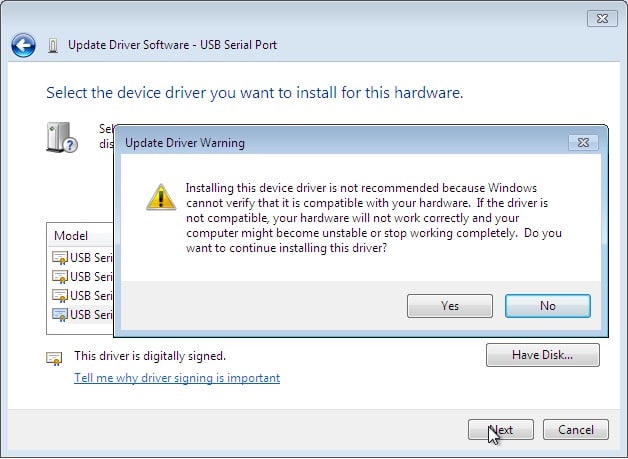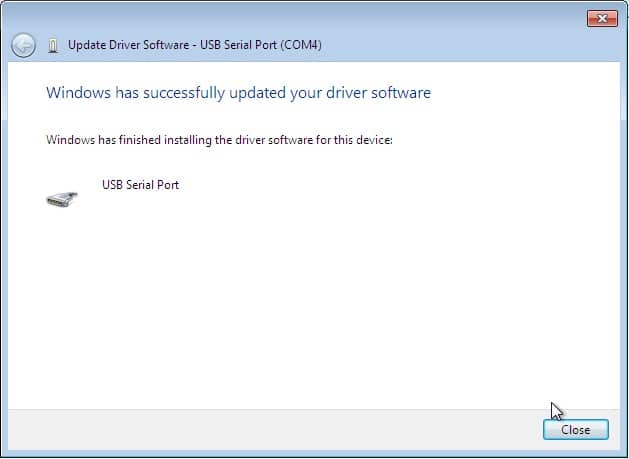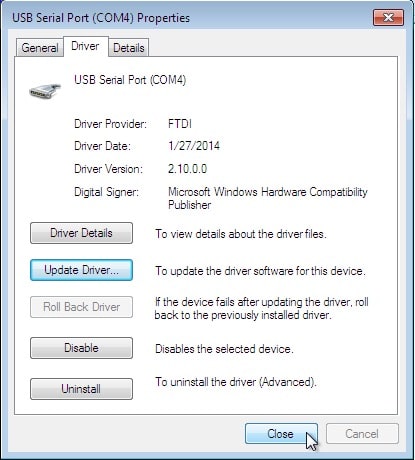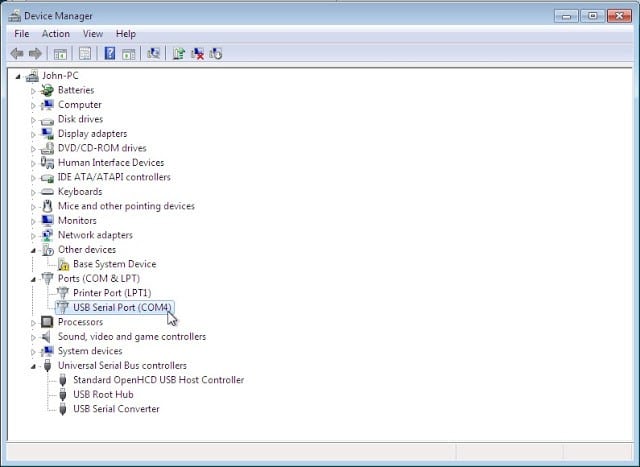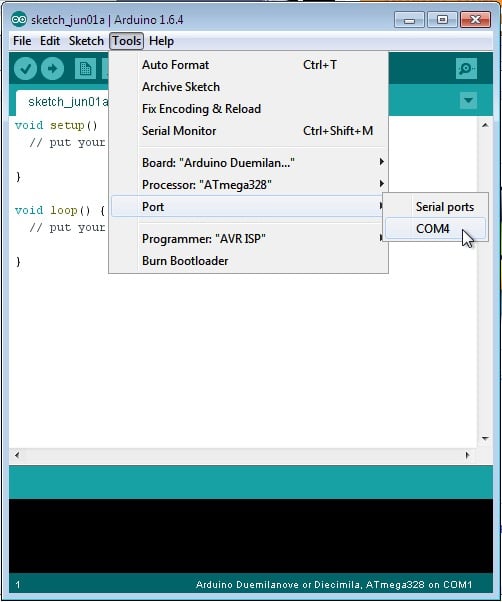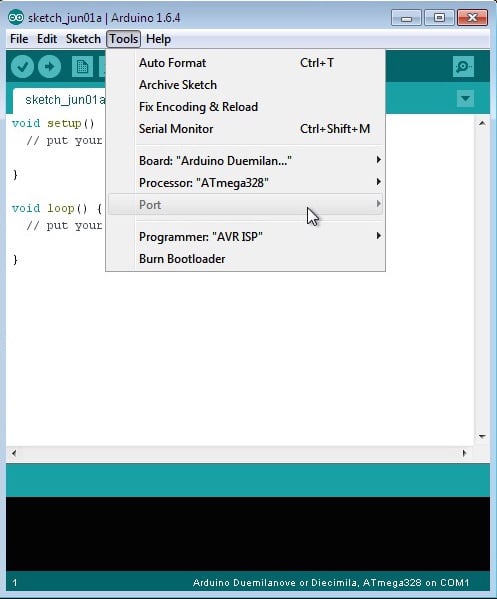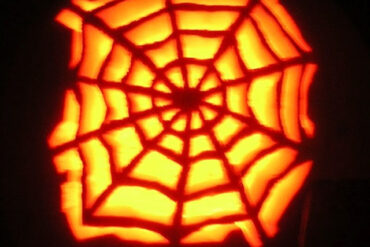I purchased the Kip Kay Arduino Kit and assembled it and when I got to the Part 2 > Step 9 Checkpoint I could not get the board to show up on my computer in the Arduino Software!! I tried it on a virtual machine and it saw the device in the USB port list but the Arduino software still didn’t list a COM serial port. I learned that I’m having this error because of a change FTDI did to their drivers to combat clones or counterfeit Chinese chips and it’s messing all kinds of things up, real FTDI chips included and that is why it isn’t recognized. You can make it work, you just need to manually install the drivers. I don’t know how to do it on a Mac but I did find a
video on youtube by a German guy speaking English with a German Windows 7 machine. I dislike video tutorials of step-by-step computer stuff and find them hard to follow (rewinding and pressing pause all the time) so I decided to put all the steps out there for you to follow with lots of screen shots from when I did it myself.
Arduino Will Not Show up on Serial Port–How to Install Arduino USB Drivers in Windows 7 on a PC or on VirtualBox
If you are on a physical Windows 7 PC simply skip down to Step 2.
Step 1: Connect your Arduino to your Windows 7 VirtualBox machine.
Start up your Windows 7 VirtualBox and plug your Arduino into your Mac. Then click on the usb icon on the lower right corer of the Virtual machine window and make sure that “FTDI FT232R USB UART [0600]” is checked as seen below:
 |
| FTDI drivers extracted to a folder on the desktop called CDM |
If you are on Windows 7 you simply double click the zip file which just “opens” the zip file like it is a folder. Then click and drag the contents into another folder you must create on the desktop, I called it CDM.
Step 4: Click on the Start Menu and then right click on “Computer” and click on Properties.
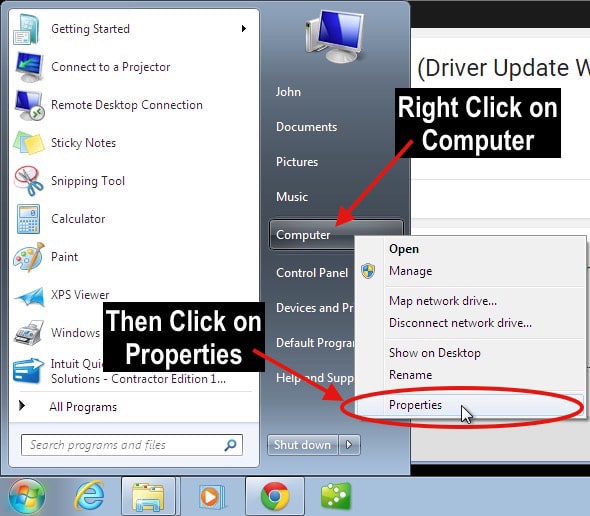 |
| Start Menu > Right Click on “Computer” > Click on Properties |
Step 5: Open the “Device Manager.”
Click on “Device Manager” in the Computer Properties:
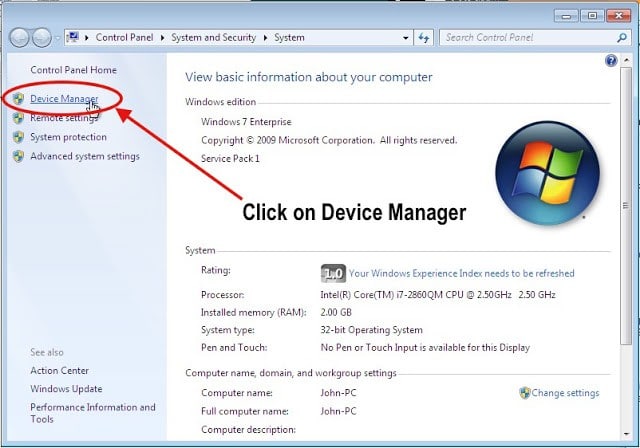 |
| Click on Device Manager |
Step 6: Locate the FT232R USB UART device in the device manager list:
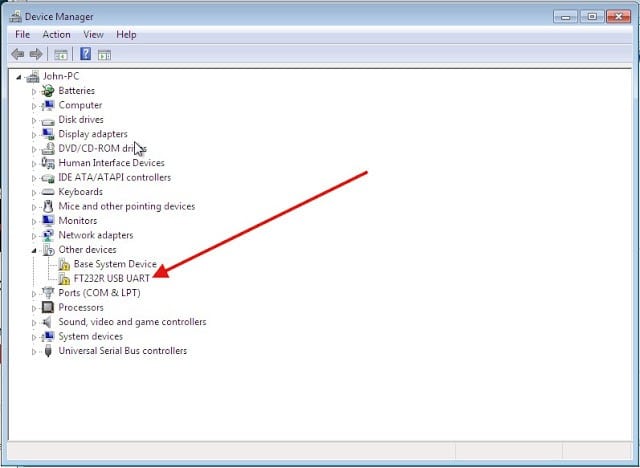 |
| Device Manager: FT232R USB UART |
Step 7: Right click on “FT232R USB UART” and click on properties.
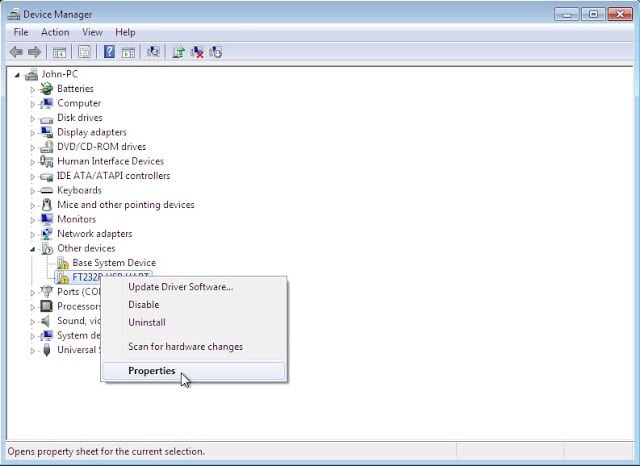 |
| Right-Click on “FT232R USB UART” and click on Properties |
Step 8: Click on the “Driver” tab of the Properties window and then click on the “Update Driver…” button:
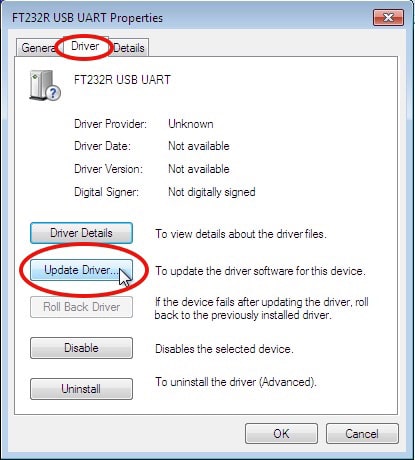 |
| Click on the “Driver” tab and then click the “Update Driver…” button |
Step 9: Click on “Browse my computer for driver software”:
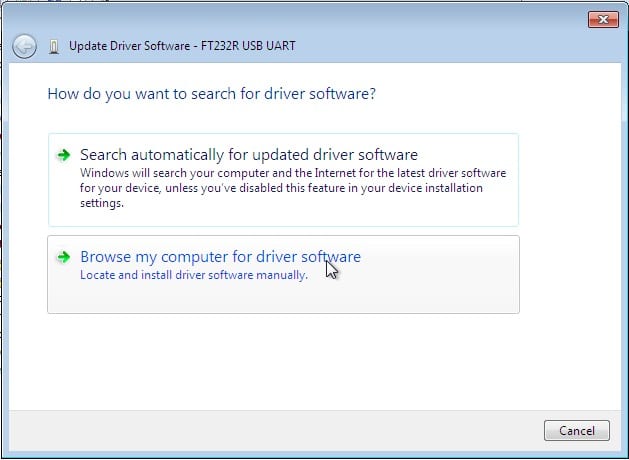 |
| Click on “Browse my computer for driver software” in the Update Driver Window |
Step 10: Click on “Let me pick from a list of device drivers on my computer”
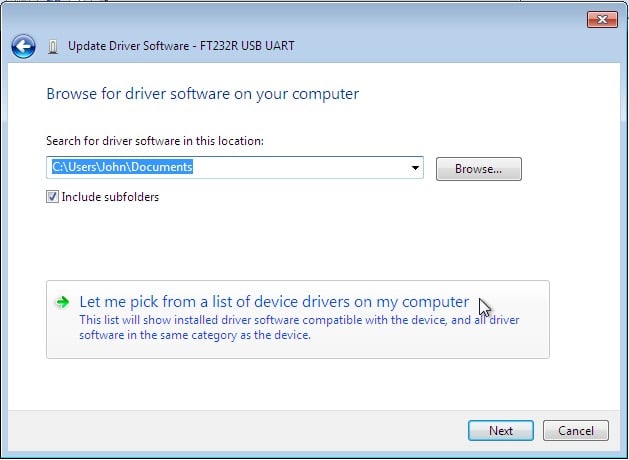 |
| Click on “Let me pick from a list of device drivers on my computer” |
Step 11: Click on “Show All Devices” (should be automatically selected) and the click the “Next” button:
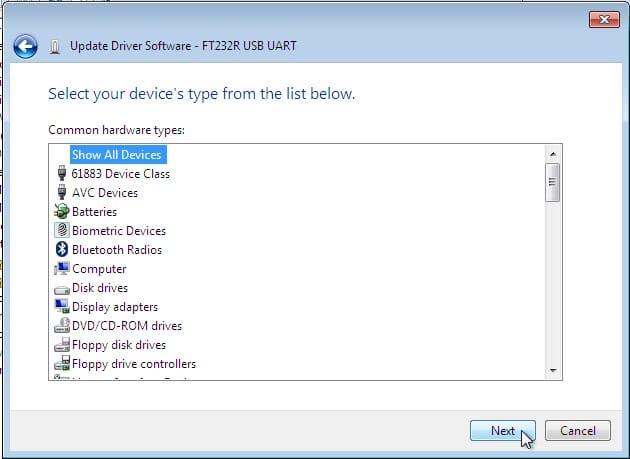 |
| Click on “Show All Devices” and then Click the “Next” button |
Step 12: Click the “Have Disk” Button:
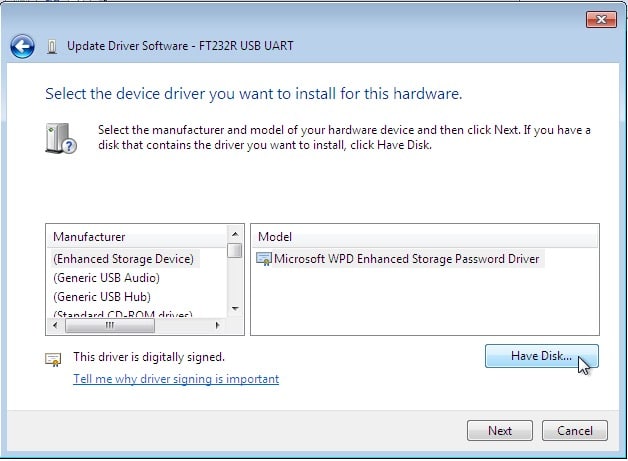 |
| Click the “Have Disk” button |
Step 13: Click the “Browse” button:
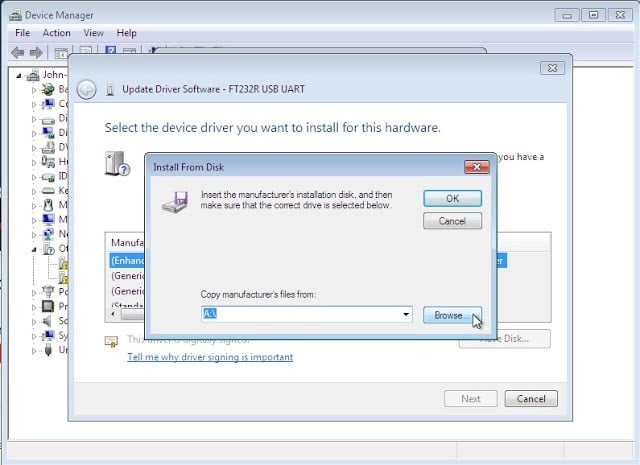 |
| Click the “Browse” button |
Step 14: Browse to the location of the drivers.
Click on the “Desktop” Icon in the left window and browse to the folder you extracted the drivers into in step 3 and then open the folder that holds the drivers:
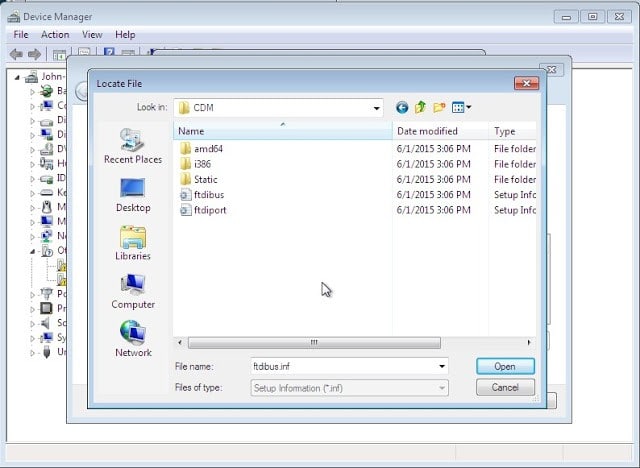 |
| Browse to the folder where you extracted the drivers in Step 3 |
Step 15: Click on the ftdibus file and click the “Open” button.
Note, the file may be called ftdibus.inf if you have the preference turned on to show known file extensions:
 |
| Click on the ftdibus.inf file and click the Open Button |
Click on the “OK” button in the resulting window that pops up:
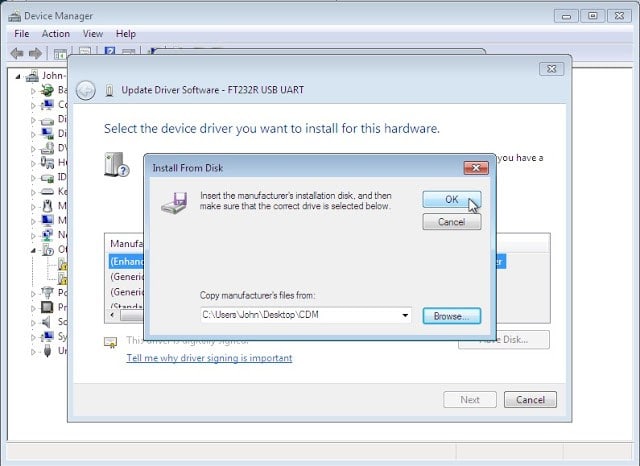 |
| Click on the “OK” button |
Step 16: Select “USB Serial Convertor” from the list and click the “Next” button:
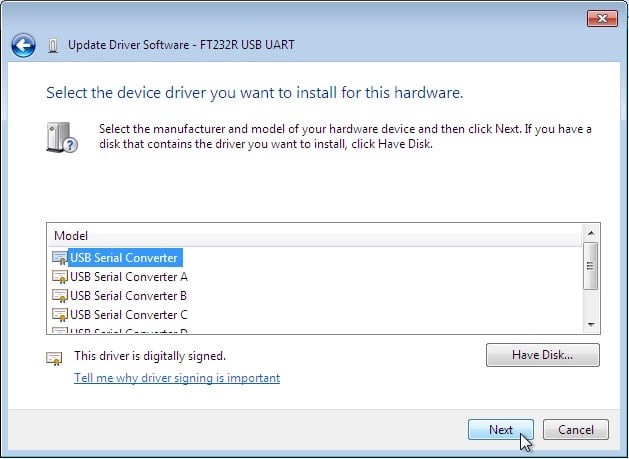 |
| Click on “USB Serial Converter” in the list and click the “Next” button |
Step 17: Click “Yes” to override the warning window.
It is warning you that Window cannot verify this driver (you get this error because it is a cloned Arduino board and the driver is unsigned):
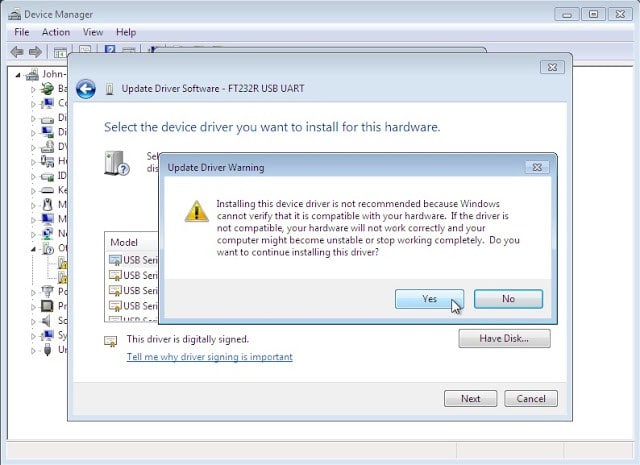 |
| Click the “Yes” button to move on |
Step 18: Wait a while.
It will take a little while for the driver to install and then if you are successful you will get the following message, which you can click the “Close” button:
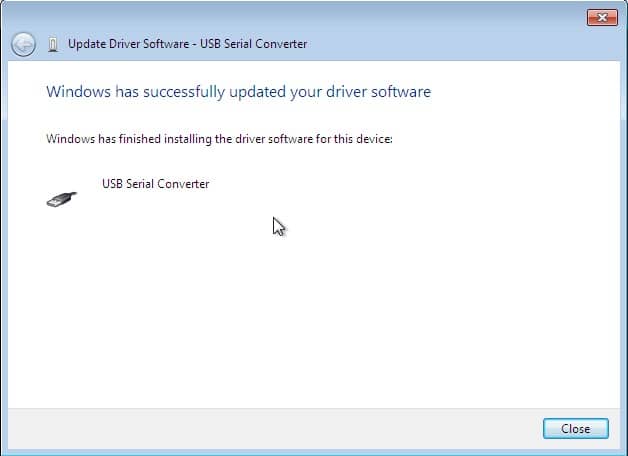 |
| Click “Close” to finish installing the Serial Converter |
Click the “Close” button to close the USB Serial Converter Properties window:
Amazon Associate Disclosure: As an Amazon Associate I earn from qualifying purchases. This means if you click on an affiliate link and purchase the item, I will receive an affiliate commission. The price of the item is the same whether it is an affiliate link or not. Regardless, I only recommend products or services I believe will add value to Share Your Repair readers. By using the affiliate links, you are helping support Share Your Repair, and I genuinely appreciate your support.
Related
